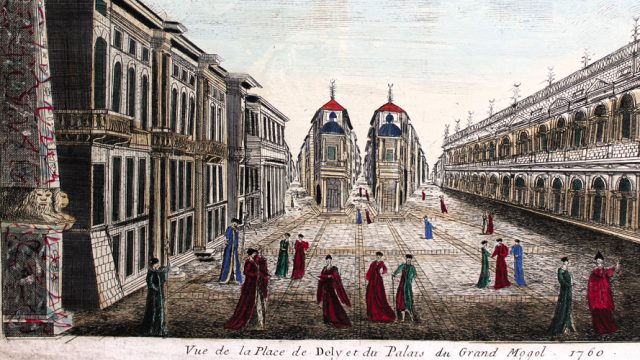These days, when travel guidebooks and trip-advising sites abound, even the impulsive foreign backpacker has quite an accurate idea of what to expect in India—the metropolises and the narrow by-lanes of old, quaint towns. In the 18th century, however, this luxury wasn’t available to those curious about the subcontinent and its then Mughal rulers. Hence, some European prints from that era are comically off the mark in their depictions, for the artists themselves had never visited the cities they were portraying. Take, for instance, this print from 1760 made by the famous printmaker, Jacques Chereau (1688-1776) of Paris, that purportedly shows the Red Fort and the broad street in front of it (currentday Chandni Chowk).

Neither does the Red Fort look anything like the real deal, nor do the people or their attire match historical records. Part of the private collection of Swapna Liddle, author of Chandni Chowk: The Mughal City of Old Delhi, the image is an optical print also called vue d’optique, which was meant to be viewed through a zograscope, which produced an illusion of depth. This particular image, however, made presumably from hearsay, also produced an illusion of the city of Shahjahanabad that made it look like a European street.




